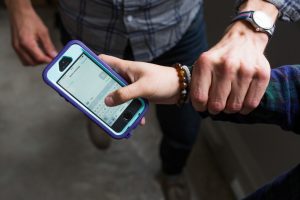LatinaLista — Children are supposed to be taken care of by the adults in their lives. There’s no scenario that brings swifter condemnation and action than those of children who are neglected or abused at the hands of their parents, grandparents or guardians.
In an odd way, these abused and neglected children are the lucky ones because once society finds out about them that’s when they receive, in most cases, the kind of care they should have had all along.
However, there’s one group of children for whom, even when people find out about their troubling situations, nothing changes. These are the children who have reversed roles with the adults in their families and instead of living the carefree life of a child, they are now the caregivers.
According to the National Alliance for Caregiving (NAC) & United Hospital Fund, 2005, there are an estimated 1.3-1.4 million caregiving children ages 8-18 years old in the U.S. Of these, 38% provide care for a grandparent and 34% provide care for a parent.
In South Florida, one woman’s firsthand knowledge of the emotional toll it takes on a child to care for a sick relative led her to create the American Association of Caregiving Youth (AACY).
Connie Siskowski created the AACY, the first organization of its kind in the nation to support and raise awareness that there does exist children who have dual roles in their families — students and caregivers.
AACY works in Palm Beach, Florida schools:
AACY is helping 300 students right now and has a long waiting list. Siskowski said she believes there are 10,000 students in Palm Beach County schools responsible for care giving, “and that’s a low estimate,” she said.
The AACY supports these children by keeping them motivated to stay in school and not give into the temptation of dropping out. They get corporations and sponsors to buy computers so these child caregivers can stay connected and up to speed with their homework and social networking with their peers, even if they are isolated from everyone due to taking care of a relative.
The AACY also sponsors special camps for the children so they can have a break from their adult responsibilities. Though focused on middle school students, the program is now expanding into high schools.
Seven in ten child caregivers are caring for a parent or grandparent (72%). Of these, the care recipient is their mother (28%) or grandmother (31%). One in ten child caregivers is helping a sibling (11%). Caregivers in minority households are more likely to be caring for their mother (42%) than those in non-minority households (25%).
Of the 14 caregiving responsibilities examined in this study, the two most common are keeping the care recipient company (96%) and helping with chores (85%). Next most common are helping with grocery shopping (65%) and meal preparation (63%).
One in six child caregivers (17%) helps the care recipient communicate with doctors or nurses, and 15% of those aged 12 and older help make calls and arrangements for other people to help the care recipient.
“Not every child gets 18 years of childhood. Some have to become responsible adults well before their bodies grow into maturity.”





